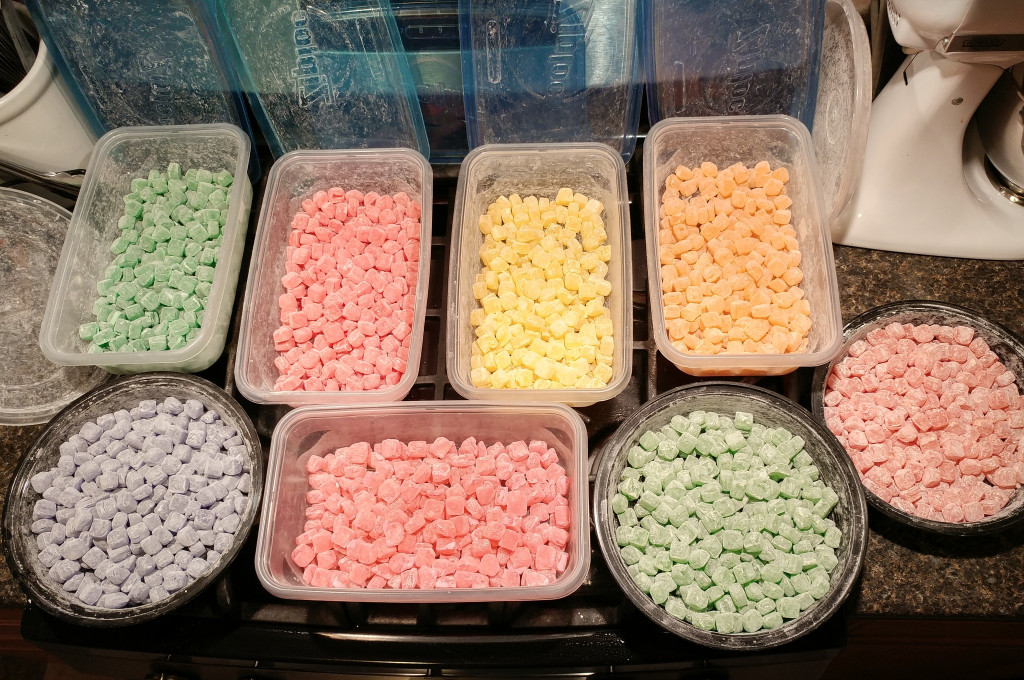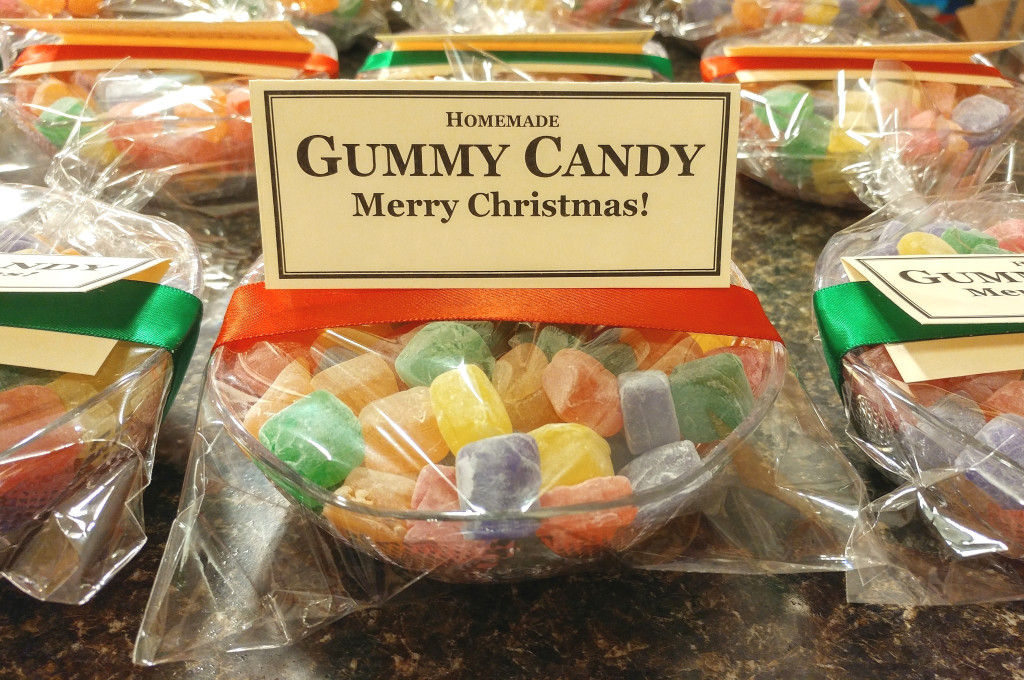Topics
Gummy Candy (2019)
Chewy candy cubes in six different flavors (lime, orange, lemon, strawberry, raspberry, cherry). This one was an interesting journey, fraught with malformed confectionery and accusations of industrial espionage.
A dis-agar of epic proportions
My original idea was to try to make candy that has a texture similar to those half-circle "fruit slices" that candy stores sell. I wanted to try flavoring them with frozen fruit, rather than concentrated flavorants. I picked up some agar agar (which is what gives those fruit slices their distinctive texture) and experimented with a bunch of different recipes and proportions, but couldn't get it quite right. Too much agar agar resulted in a rubbery texture akin to a chicken breast. Kind of gross to bite into. Not enough, and it was impossible to remove them from the silicone molds.
I boiled down some frozen raspberries into a thick syrup, and the flavor it imparted was okay, but lacked intensity. I ultimately switched to using flavorings from LorAnn Oils. The citrus ones simply contain the distilled oil from the respective fruit (lime, orange, or lemon) while the others are designed to emulate the flavor.
A tale of two starches
Unsatisfied with the results using agar agar, I did further research and discovered that most gummy candy is made predominantly of starch (usually derived from corn) and sugar. But "starch" is actually composed of two polymers: amylose and amylopectin. Regular corn starch from the grocery store contains about 25% amylose and 75% amylopectin. When mixed with water and heated to the gelatinization point, amylose tends to get hard and rubbery, while amylopectin gets thick and gooey. The former is more desirable for making chewy candy, while the latter is more useful for pie fillings.
In addition to the ratio of amylose and amylopectin, a starch can also be treated, or modified, in a way that changes its properties. This is then referred to as "modified corn starch". For example, Clear Jel is a well-known type of modified corn starch that is readily available to home cooks. It's used to make pie fillings that become thick, but not hard, after cooling. It has a high amylopectin content, and has been acid-modified to delay the setting process. While the delayed setting would be convenient, the resulting texture is the exact opposite of what you want for candy!
"Thin-boiling starch" describes the types of modified starch used by large candy manufacturers. When you're cooking a starch/sugar/water mixture to make candy, there are two main goals: gelatinize the starch, and remove water. The amount of water in the end product affects how soft or chewy it is. Since starch gelatinization happens at a lower temperature than is required to boil the water away, the mixture can get extremely thick but still contain a lot of water. A starch containing large amounts of amylopectin will become thick and gloppy somewhere around 190-200°F, and won't set to a hard candy if cooled. Thin-boiling starch solves this problem, by being high in amylose and being modified in a way to help delay firming until it cools (referred to as "low hot viscosity"). This also makes it possible to deposit the candy into molds.
Mission Impossible: Corn Starch
I stumbled across the website of a company that makes these starches. Fully aware that it's a large-scale industrial supplier, I figured it couldn't hurt to request some samples for experimentation. Within a half an hour, I received an order cancellation message which included this statement:
Due to the confidential nature of our business and to protect our intellectual property, we only offer fast and free product samples to commercial enterprises for use in their commercial product development processes.
Apparently my intention was to steal their corn starch IP, rather than use it to make candy (?). I guess I'd have to start a business to do that. Oh well. In the meantime, regular corn starch it is!
Into the thick of it
I actually managed to do pretty well using plain old grocery store corn starch. It causes a few complications though:
- If you cook it too fast, it gets hard lumps of gelatinzed amylose mixed into the gooey amylopectin. This is mitigated by lowering the heat.
- Once it gets thick, it tends to get a bit... volcanoey. Steam tends builds up in the mixture and then shoot out in little puffs. A lot of stirring is required to keep this from making a giant mess.
- After cooking, it's extremely hard to get into the molds. You have to work quickly and squeegee it into the cavities with a dough scraper before it sets.
Once filled, I put the molds in the freezer to harden the candy enough to pop out. A light dusting of corn starch prevented them from sticking to each other. The resulting candy was on the softer side, but had a nice texture and flavor.
I packaged them up into little dollar store candy bowls, complete with a printed flavor key. Ultimately, I was pleased with how they turned out, and learned quite a lot along the way!

